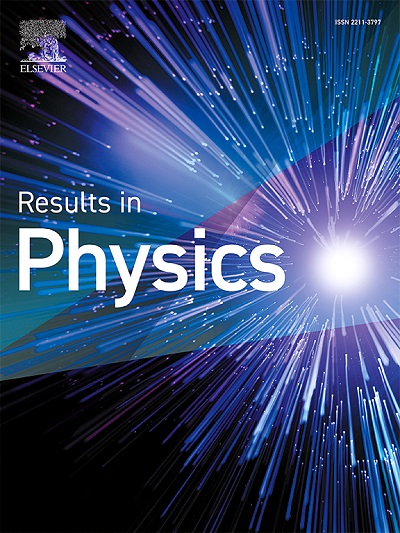A comprehensive study of physical properties of TMP2 (TM = Fe, Ru, Os): As semiconductors for optoelectronic and thermoelectronic applications
IF 4.4
2区 物理与天体物理
Q2 MATERIALS SCIENCE, MULTIDISCIPLINARY
引用次数: 0
Abstract
Herein, we have performed a comprehensive study on the electronic, structural, optical, and thermoelectric characteristics of TMP2 (TM = Fe, Ru, Os). The optimized parameters reveal that TMP2 crystallize in an orthorhombic (Pnnm; #58). Both DOSs and BSs within PBE, mBJ and SOC depict that TMP2 possess semiconductor nature with a narrow bandgap ( = 0.414, 0.553 and 0.775 eV), respectively. The calculated DOS confirm that the Fe-3d, Ru-4d, and Os-5d orbitals have the dominant contribution at the top of valence bands. In addition, TMP2 show unique optical characteristics such as strong absorption, high conductivity, and fit refractivity in the visible region. Finally, the thermoelectric characteristics, Seebeck power, figure of merit, power factor, electrical and thermal conductivities, and heat capacity are described at different . Notably, the obtained characteristics and ( = 1.0; 60–300 K) highlight the huge potential of semiconductors TMP2 and their perfect suitability for various optoelectronic and thermoelectronic applications.

TMP2 (TM = Fe, Ru, Os)物理性质的综合研究:作为光电子和热电子应用的半导体
在此,我们对 TMP2(TM = Fe、Ru、Os)的电子、结构、光学和热电特性进行了全面研究。优化参数显示,TMP2 以正交(Pnnm; #58)结晶。在 PBE、mBJ 和 SOC 中的 DOS 和 BS 都表明 TMP2 具有半导体性质,带隙很窄(Eg 分别为 0.414、0.553 和 0.775 eV)。计算得出的 DOS 证实,Fe-3d、Ru-4d 和 Os-5d 轨道在价带顶端起主导作用。此外,TMP2 还显示出独特的光学特性,如在可见光区域具有强吸收、高导电性和合适的折射率。值得注意的是,所获得的特性和(ZT = 1.0; 60-300 K)凸显了 TMP2 半导体的巨大潜力及其在各种光电和热电应用中的完美适用性。
本文章由计算机程序翻译,如有差异,请以英文原文为准。
求助全文
约1分钟内获得全文
求助全文
来源期刊

Results in Physics
MATERIALS SCIENCE, MULTIDISCIPLINARYPHYSIC-PHYSICS, MULTIDISCIPLINARY
CiteScore
8.70
自引率
9.40%
发文量
754
审稿时长
50 days
期刊介绍:
Results in Physics is an open access journal offering authors the opportunity to publish in all fundamental and interdisciplinary areas of physics, materials science, and applied physics. Papers of a theoretical, computational, and experimental nature are all welcome. Results in Physics accepts papers that are scientifically sound, technically correct and provide valuable new knowledge to the physics community. Topics such as three-dimensional flow and magnetohydrodynamics are not within the scope of Results in Physics.
Results in Physics welcomes three types of papers:
1. Full research papers
2. Microarticles: very short papers, no longer than two pages. They may consist of a single, but well-described piece of information, such as:
- Data and/or a plot plus a description
- Description of a new method or instrumentation
- Negative results
- Concept or design study
3. Letters to the Editor: Letters discussing a recent article published in Results in Physics are welcome. These are objective, constructive, or educational critiques of papers published in Results in Physics. Accepted letters will be sent to the author of the original paper for a response. Each letter and response is published together. Letters should be received within 8 weeks of the article''s publication. They should not exceed 750 words of text and 10 references.
 求助内容:
求助内容: 应助结果提醒方式:
应助结果提醒方式:


